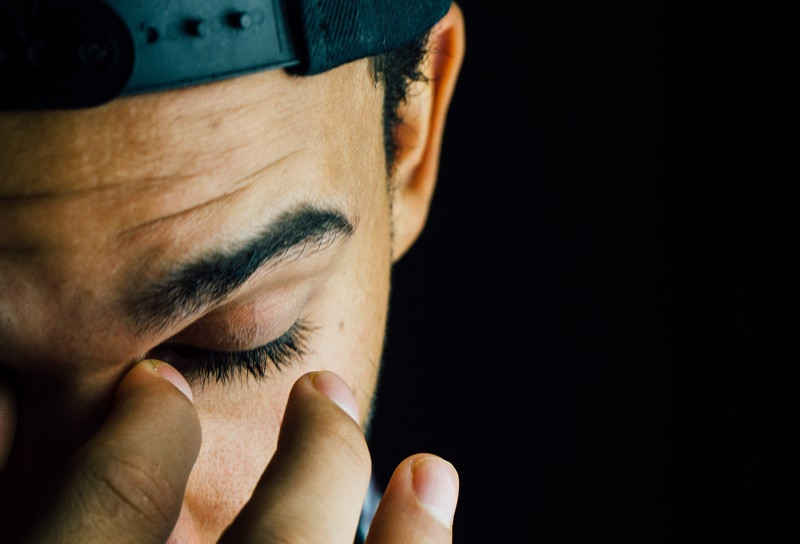
Depressive symptoms and anxious symptoms are frequently linked. Thus, a high percentage of subjects who show symptoms of depression also show anxiety, and vice versa. But it can also be said that beyond the statistics, anxiety and depression reinforce each other in several of the experiences of people with mental health problems.
In this article we will talk about the relationship between depression and anxiety so that it is easier for you to understand both psychological alterations and the aspects in which they overlap.
What are depression and anxiety?
Anxiety is, mainly, a state of high activation of the nervous system that is triggered by situations that we perceive as dangerous or potentially threatening, either because they can lead us to problems (some of them material, others more abstract and based on everyday life). society) or because they can make us lose opportunities.
Normally, in anxiety, the subject usually shows fear of a stimulus, situation or event, and it leads to a state of anguish and intrusive thoughts that arise again and again and disturb the person. Physical symptoms also appear such as muscle tension, increased heart rate or dysregulation of sleep or appetite, tremors or an increased feeling of tiredness. All of them symptoms linked to a greater predisposition to move quickly and without stopping to think much.
Of course, it should be noted that although anxiety is not a psychopathology and in fact it is usually useful to us, in some cases, if we do not manage it properly, it gives rise to anxiety disorders, which are mental health problems.

For its part, depression is defined as a mood disorder characterized by a state of apathy, lack of motivation, anhedonia and loss of interest in carrying out activities or socialize in free time. Linked to pathological sadness, other symptoms can also be observed, such as altered hunger and sleep, difficulty concentrating, feeling of guilt, anxiety about not finding meaning in what one does, feeling of tiredness and constant fatigue, thoughts obsessive thoughts and thoughts linked to death or even suicide.
Despite different symptoms being observed, as you can see, similar symptoms that are shared are also detected, such as feelings of anguish or constant worries based on recurrent and intrusive thoughts, which “invade the person’s mind” frequently.
What is the relationship between anxiety and depression?
Psychologists Anna Clark and David Watson proposed a model in which they try to relate anxiety to depression. In it they propose three main elements to be able to define both pathologies: negative affect, positive affect and physiological hyperactivation. Two of them are linked to only one of the disorders, but one of them is shown in both, thus outlining the relationship that exists between depression and anxiety.
1. Positive affect
This element includes affective states such as: excitement, energy, happiness, enjoyment, interest, confidence and pride. In this way, this element occurs only in depression, but in a reduced way; That is, people with depression show low positive affect, which presents with sadness, loss of interest, psychomotor inhibition, feeling of loss and low activation of the sympathetic nervous system. This dimension is mainly related to hopelessness.
2. Physiological hyperactivation
Physiological hyperactivity, which is characterized by an increase in bodily activation, presents symptoms such as: palpitations, dizziness, labored breathing and tremors. Likewise, this distinction is typical of anxiety, in which we observe a high physiological reactivity with symptoms such as fear, panic, increased sympathetic activation, hypervigilance, perception of threat or fear, and avoidance. This element is especially linked to the feeling of uncertainty.
3. Negative affect
Negative affect shows affective states such as discomfort, sadness, anxiety, anger, hostility, fear, guilt and worries. This dimension occurs at a high level in both depression and anxiety, generating symptoms such as: irritability, worry, guilt, insomnia and low self-esteem. This element is linked to the feeling of helplessness.
How do both forms of psychological distress reinforce each other?
We understand the factors of negative affect and positive affect as independent, that is, they are not extremes of the same dimension, but are part of different dimensions. In this way, high or low positive affect and high or low negative affect are valued. In other words, having high negative affect does not mean having low positive affect, it is not the opposite, one does not depend on the other; The range of possibilities of the emotional side of the human being is too rich and full of nuances for our experiences to work that way.
In this way, negative affect involves greater sensitivity to negative stimuli. A high score on this dimension is usually linked to a greater tendency to experience negative moods. Given the similarities in symptoms that both disorders, anxiety and depression, can show, they are usually observed together, with it being more common to first experience agitation and anxiety and later develop hopelessness and depression.
But… How is this link between depressive symptoms and high anxiety reflected in people’s daily lives? Mainly, in the fact that both experiences They lead to a state in which we believe we are paralyzed, unable to cope with what happens to us. Being depressed, we assume that we have no role to play in life, and that causes us to perceive everything through an existential void, in which we can only limit ourselves to suffering the lack of meaning that everything has for us.
When we are anxious, the idea that there are too many “fronts” to attend to and that every decision we make will surely be the wrong one, leads us to a state of blockage in which we assume that the only thing we can do is anticipate our failure, which It also leads to a type of existential emptiness: whatever we do will be insufficient. That is why the stages of pure emotional stagnation and anguish when anticipating the bad thing that will happen alternate in people who present an anxious-depressive condition, something very common. In these situations, it is important to go to psychotherapy as soon as possible.
Do you want to have professional psychological support?
If you want to start a psychotherapy process to learn to manage your emotions, enhance your self-knowledge and connect with what gives meaning to your life, contact us.
In Adhara Psychology We work from humanistic psychology to help people of all ages, couples and families with forms of discomfort such as depression, excess anxiety, trauma, low self-esteem, and more. We can assist you in person or online.








